Older Adult Homelessness during COVID-19
Across the nation, the population experiencing homelessness is getting older. The end of the Baby Boomer generation (those born between 1955 and 1964) have faced homelessness at higher rates than other generational cohorts for decades. Although it is difficult to point to a single cause, researchers note that these Baby Boomers first entered the workforce as young adults during two recessions in the late 1970s and early 1980s. The ensuing high unemployment rates, depressed wages, and rising housing costs would have been particularly difficult for young people with no work experience or significant savings to navigate, and would have been even more difficult for young Black people. Further, because the Baby Boomer generation was the largest in history at that point, the social safety net became quickly strained. As of this year, all Baby Boomers are over the age of 55, and those experiencing homelessness face several challenges that are further exacerbated by the COVID-19 crisis.
Older Adults Experiencing Homelessness
According to the 2020 Greater Los Angeles Homeless Count, there are 14,896 older adults (ages 55 and older) experiencing homelessness, both sheltered and unsheltered, in the Los Angeles Continuum of Care (LAHSA, 2020). This age group makes up over a quarter of the population experiencing homelessness in Los Angeles County, and 85% of this cohort are unsheltered. Older adults experiencing homelessness in Los Angeles disproportionately identify as Black and male and experience chronic homelessness at higher rates than the general homeless population (LAHSA, 2018). Chronic homelessness describes people who have experienced homelessness for at least a year — or more than four times in the past three years — while struggling with a disabling condition such as a serious mental illness, substance use disorder, or physical disability. The map and chart below show the population of older adults across Los Angeles County.
Older adults experiencing homelessness have more medical needs than housed older adults, and experience “geriatric medical conditions” (such as decreased mobility and cognitive decline) at a much younger age than their housed peers (Brown et al., 2017; Brown, Kiely, Bharel, & Mitchell, 2012). The COVID-19 pandemic puts this already vulnerable population further at risk of serious health complications. The highest mortality rate for the virus is in people over the age of 65, and 72% of deaths from the disease occur in those over the age of 50 (LA Country DPH).
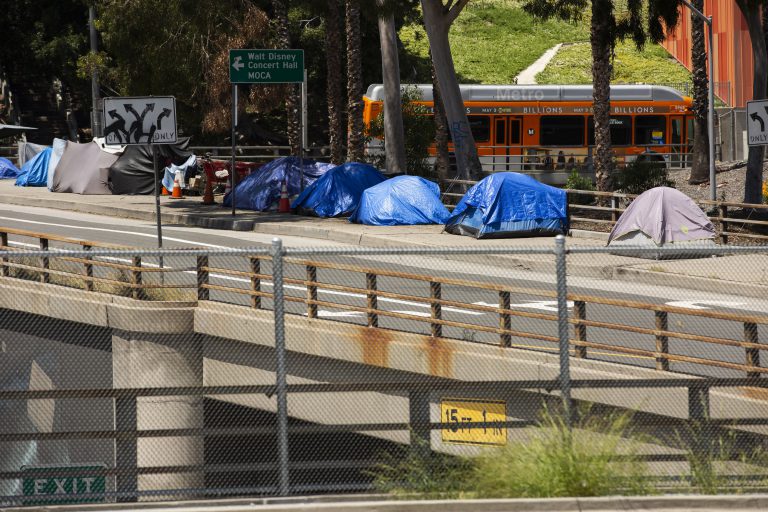
Homelessness and COVID-19
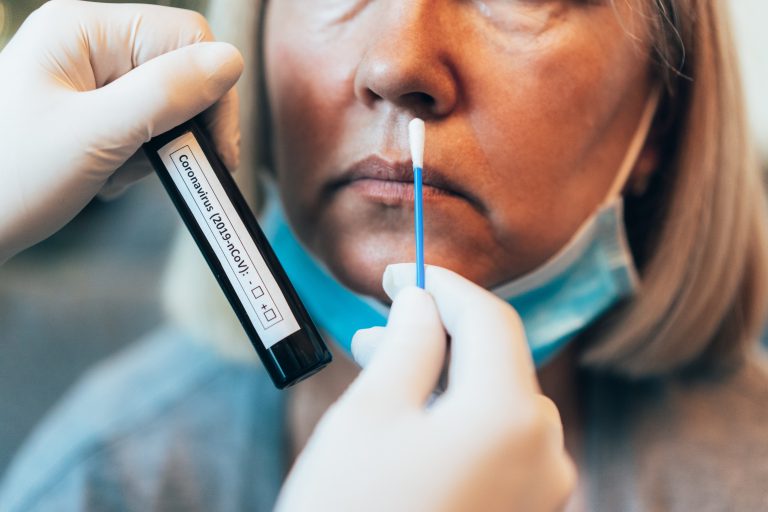
The COVID-19 pandemic has put significant pressure on cities and counties to provide immediate, temporary housing solutions for people experiencing homelessness to prevent the spread of the disease. There are currently over 1,300 confirmed cases of COVID-19 amongst people experiencing homelessness in LA County, a rate of about 1.7%, an almost identical rate to the general population (LA Times, 2020). These numbers are likely an underestimate for both populations due to a lack of quality data and inconsistent testing, particularly so for those experiencing homelessness who have less access to healthcare.
During the COVID-19 pandemic, the State of California has partnered with federal government, county governments, and local homeless service authorities (including LAHSA in Los Angeles County) on an effort called “Project RoomKey” to temporarily safely shelter people experiencing homelessness in hotels and motels. The program focuses on providing isolated shelter for individuals most likely to need hospitalization or die if infected by the coronavirus, particularly those over 65 as well as people with underlying health conditions. Project Roomkey is also attractive to hotel owners who are struggling to fill their rooms due to decreased travel during the pandemic. As of August 24th, LAHSA’s Project Roomkey sites have sheltered more than 4,000 people, 46% of whom are older adults over the age of 55 (LAHSA, 2020) (Los Angeles Times, 2020).
What Comes Next?
Without renewed federal funding, the State of California will not be able to continue Project Roomkey. With COVID showing no signs of slowing down, officials are planning to ensure that the thousands of people sheltered through the program don’t return to the street when Project Roomkey funding runs out. The California Department of Housing and Community Development is allocating $550 million in federal COVID-relief funding to local governments to purchase and rehabilitate hotels, motels, and other unoccupied buildings to convert them into either interim or permanent housing for people experiencing homelessness (CDHCD, 2020). Alternatively, the county could provide rental subsidies, similar to the Housing Choice Voucher Program, to people covered by Project Roomkey in order for them to find alternative housing. A last resort could be to build more congregate shelters, ensuring that there is at least one shelter in every neighborhood, although shelters present challenges for social distancing.
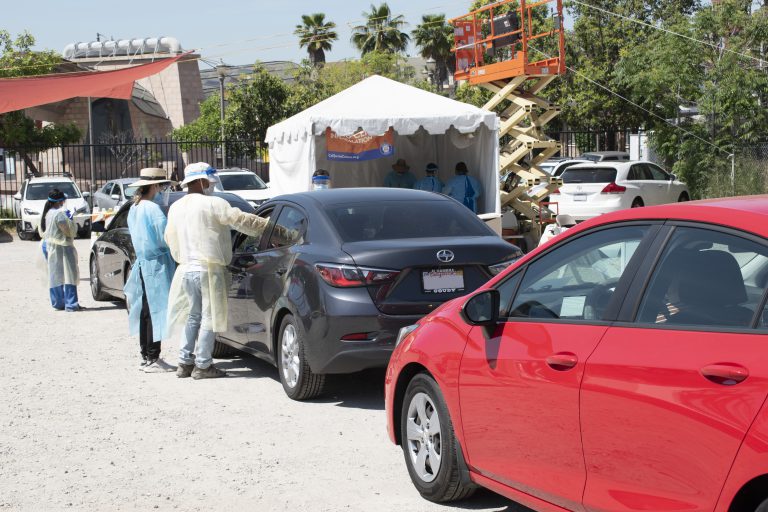
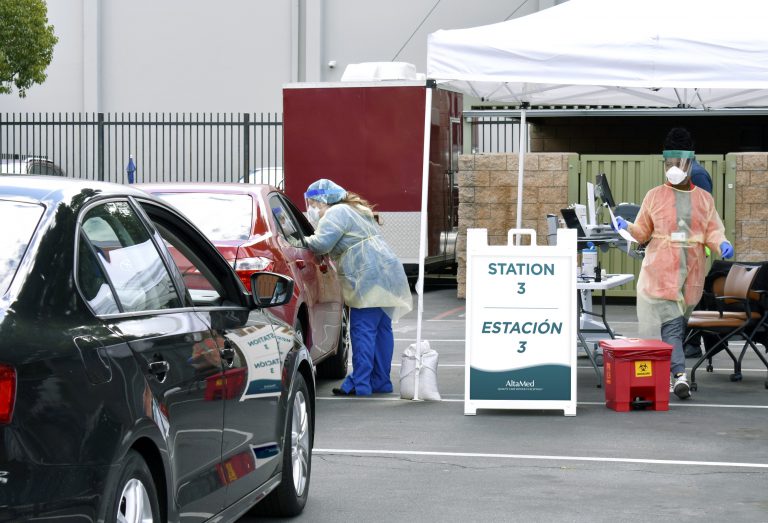
Evidence shows that obtaining housing, especially permanent supportive housing, improves health outcomes for older adults experiencing homelessness (National Academies of Science, Engineering, and Medicine, 2018) (Bamberger & Dobbins, 2015). Permanent supportive housing is a program that combines subsidized housing with supportive services like physical and mental healthcare. Like all types of housing in Los Angeles County, there is not enough supply of permanent supportive housing units, nor subsidies to house people in the units, to meet demand. The City and County of Los Angeles plan to build over 10,000 permanent supportive housing units by 2025 using funding from Proposition HHH passed in 2016 (LAHSA, 2020). During the 2019-2020 fiscal year, over 700 permanent supportive housing units opened and an additional 2,300 are set to open during this fiscal year.
Older adults experiencing homelessness are a growing population that is particularly vulnerable to contracting and dying from COVID-19. Local government agencies and service providers are working tirelessly on both short term solutions like Project Roomkey and long term solutions like increasing the supportive housing supply to ensure that our aging unhoused neighbors can find safety during this unprecedented health crisis.
View the latest information from the Greater Los Angeles Homeless Count for your neighborhood on the NDSC platform.
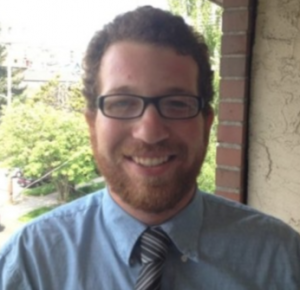
Allan Broslawsky
Allan Broslawsky is a Master of Public Policy Student at the USC Price School. He has worked in education and non-profits since graduating from the University of Washington in 2013 with a bachelor's degree in Law, Societies, and Justice. After teaching middle school English in Newark, NJ, for three years, he became Regional Manager of The Petey Greene Program, an organization that recruits and trains college students to tutor incarcerated learners in prisons and jails. He is excited to return home to Los Angeles and bring his passion for social justice and education to his work at the Price Center for Social Innovation.
Sources
Bamberger, J., & Dobbins, S. (2014, July). Long-term Cost Effectiveness of Placing Homeless Seniors in Permanent Supportive Housing (Working Paper 2014-01). Federal Reserve Bank of San Francisco. Retrieved from https://www.frbsf.org/community-development/files/wp2014-01.pdf
California Department of Housing and Community Development. (2020). Homekey. Retrieved August 24, 2020, from https://www.hcd.ca.gov/grants-funding/active-funding/homekey.shtml
Carillo, J., & United Latinx Fund. (2020, May 18). Project Roomkey: Continuing to Address the Coronavirus. Retrieved from https://www.unitedlatinxfund.org/project_roomkey
Center for Disease Control and Prevention. (2020, April 30). Health Equity Considerations and Racial and Ethnic Minority Groups. Retrieved from https://www.cdc.gov/coronavirus/2019-ncov/community/health-equity/race-ethnicity.html?CDC_AA_refVal=https%3A%2F%2Fwww.cdc.gov%2Fcoronavirus%2F2019-ncov%2Fneed-extra-precautions%2Fracial-ethnic-minorities.html
Culhane, D., Metraux, S., & Kuhn, R. (2018). A Data-based Re-design of Housing Supports and Services for Aging Adults who Experience Homelessness. Retrieved from https://www.aisp.upenn.edu/wpcontent/uploads/2019/01/LA-County-Report.pdf
Krieger, N. (2020, April 16). COVID-19, Data, and Health Justice | Commonwealth Fund. Retrieved from https://www.commonwealthfund.org/blog/2020/covid-19-data-and-health-justice?utm_source=alert&utm_medium=email&utm_campaign=Health%20Coverage
Los Angeles Homeless Services Authority. (2020, June 12). Greater Los Angeles Homeless Count [Slides]. Retrieved from https://www.lahsa.org/documents?id=4558-2020-greater-los-angeles-homeless-count-presentation
Los Angeles Homeless Services Authority. (2020, May 13). COVID-19 Racial Equity Resource Guide [Slides]. Retrieved from https://www.lahsa.org/documents?id=4499-covid-19-racial-equity-resource-guide.pdf
Los Angeles Times (2020, July 30). Tracking the L.A. homeless coronavirus protection effort. Retrieved from https://www.latimes.com/projects/california-coronavirus-cases-tracking-outbreak/homeless/
National Academies of Sciences, Engineering, and Medicine; Health and Medicine Division; Board on Population Health and Public Health Practice; Policy and Global Affairs; Science and Technology for Sustainability Program; Committee on an Evaluation of Permanent Supportive Housing Programs for Homeless Individuals. Washington (DC): National Academies Press (US); 2018 Jul 11.
Newton, D. (2020, June 19). Thousands Housed in Project Roomkey in Los Angeles, but NIMBYism, Lack of Permanent Affordable Housing Blunt Progress. Retrieved from https://la.streetsblog.org/2020/06/19/thousands-housed-in-project-roomkey-in-los-angeles-but-nimbyism-lack-of-permanent-affordable-housing-blunt-progress/#:%7E:text=Legacy%20of%20Redlining-,Thousands%20Housed%20in%20Project%20Roomkey%20in%20Los%20Angeles%2C%20but%20NIMBYism,Permanent%20Affordable%20Housing%20Blunt%20Progress&text=In%20April%2C%20Governor%20Gavin%20Newsom,during%20the%20COVID%2D19%20crisis.
Office of Governor Gavin Newsom. (2020, June 30). Governor Newsom Visits Project Roomkey Site in Bay Area to Announce “Homekey,” the Next Phase in State’s COVID-19 Response to Protect Homeless Californians. Retrieved July 30, 2020, from https://www.gov.ca.gov/2020/06/30/governor-newsom-visits-project-roomkey-site-in-bay-area-to-announce-homekey-the-next-phase-in-states-covid-19-response-to-protect-homeless-californians/
Smith, D. (2020, June 22). L.A. falls short on COVID-19 homeless hotel housing promise. Retrieved from https://www.latimes.com/homeless-housing/story/2020-06-22/homeless-people-motels-hotels-los-angeles-county
Tinoco, B. M. (2020, June 9). Project Roomkey Has Placed 9,400 Homeless People Into Temporary Hotel Rooms. Now What? Retrieved from https://laist.com/2020/06/09/project_roomkey_homeless_hotel_motel_coronavirus.php
Photo Attributions
Cover Photo: Photo courtesy of Istock/JasonDoiy
Photo 1: Photo courtesy of Istock/MattGush
Photo 2: Photo courtesy of Istock/filadendron
Photo 3 & 4: Photos courtesy of AltaMed

